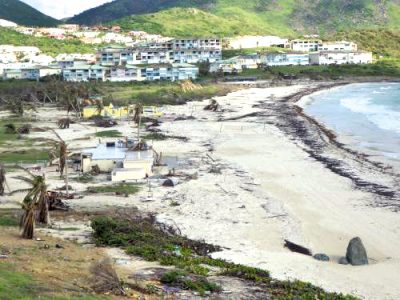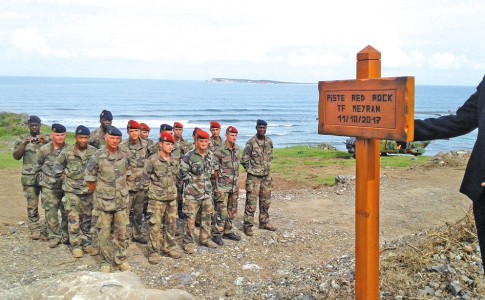To what extent has urbanization influenced the impact of Irma on coastal systems? This is the question that geomorphology researchers Virginie Duvat, Valentin Pillet and Natacha Volto, from the LIENSs laboratory at the University of La Rochelle- CNRS, accompanied by Yann Krien, Raphaël Cécé and Didier Bernard from the University of the Antilles on the climate component, set out to respond in the article entitled High human influence on beach response to tropical cyclones in small islands: Saint-Martin Island, Lesser Antilles.
Published in September 2018, this geomorphology article analyzes data from the analysis of satellite images and field surveys carried out at the end of October 2017 on 33 of the 36 beaches on the island. The less the coastal systems were developed, the more they acted as a buffer against cyclonic swells, and therefore limited the depth of marine submersion in the interior of the island. The depth of submersion depends on the size of the natural system (beach and hinterland) and its rate of recovery in native vegetation (grape trees, etc.). If the first line of vegetation located closest to the sea (within the first 15 to 25 meters) has generally been razed by the swell, the second, at the back of the beach, where it formed a dense network of trunks , branches and roots, was able to resist and capture the sediments brought by the waves. In this case, the cyclone was not only destructive, because this second line of vegetation, nourished by sand and coral debris, could gain in altitude, as in Petites Cayes for example. In this case, coastal systems have been strengthened, and they now constitute an even more effective bulwark against the sea.
On the other hand, where man has modified the coastal system by clearing the natural vegetation to plant coconut palms, the cyclonic waves penetrated deep into the land, digging large trenches and bringing large deposits of sand which posed problems for the residents, as in Orientale Bay or Lucas Bay.
When the coastline was stiffened by rip rap or walls, the cyclonic impact was uneven. Either these structures held up and the coastline remained stable, as in Marigot Bay, Or they were destroyed by the waves, as at the end of the Red Bay for example.
In summary, when the coastal system remained in its natural state, it dampened the cyclonic waves and even, in a certain number of cases, gained in altitude. While where it has been modified by man (buildings, riprap cords), even when it has withstood the cyclonic swell, it has decreased in volume. Emptied of their sand washed away by the waves, the beaches are gradually disappearing.
(More details on www.soualigapost.com)
7,016 total views











No comments